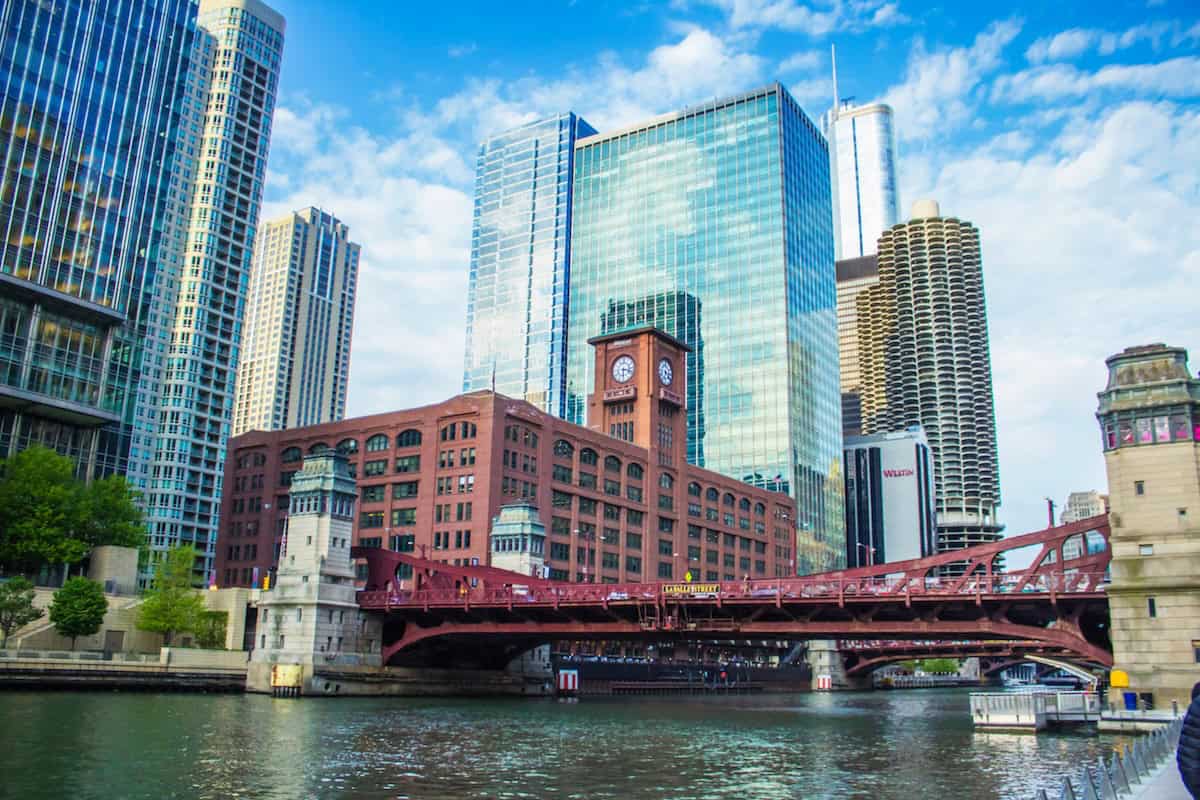
Chicago Architecture Boat Tour: Highlights Gallery of the City’s Iconic Skyline
By: Sarah Stone
Skip to Section
Chicago’s skyline tells a fascinating story of American architecture through concrete, steel, ambition, and innovation. This photo journey captures the highlights from a river tour through the heart of the city, where each building represents a different era and philosophy of design.
Chicago’s Architectural Beginnings
Before getting into the buildings, here’s a super cool fact: the Chicago River used to flow the opposite direction. Around 1900, the city’s sanitation department reversed the entire river to prevent toxins from dumping into Lake Michigan. Quite the engineering marvel!
Understanding Chicago’s Architectural Timeline
- Chicago School: The foundation style for skyscrapers
- Beaux Arts: Ancient Greek and Roman influences
- 1920s Art Deco: Growing taller with heavy ornamentation
- Depression Era: Construction stopped until the late 1950s
- 1960s Modernism: International Style – basically the opposite of Art Deco
- Postmodernism: Pays homage to specific buildings through contextualism
A Quick Tour of Chicago Architecture Highlights
Wrigley Building Clock Tower
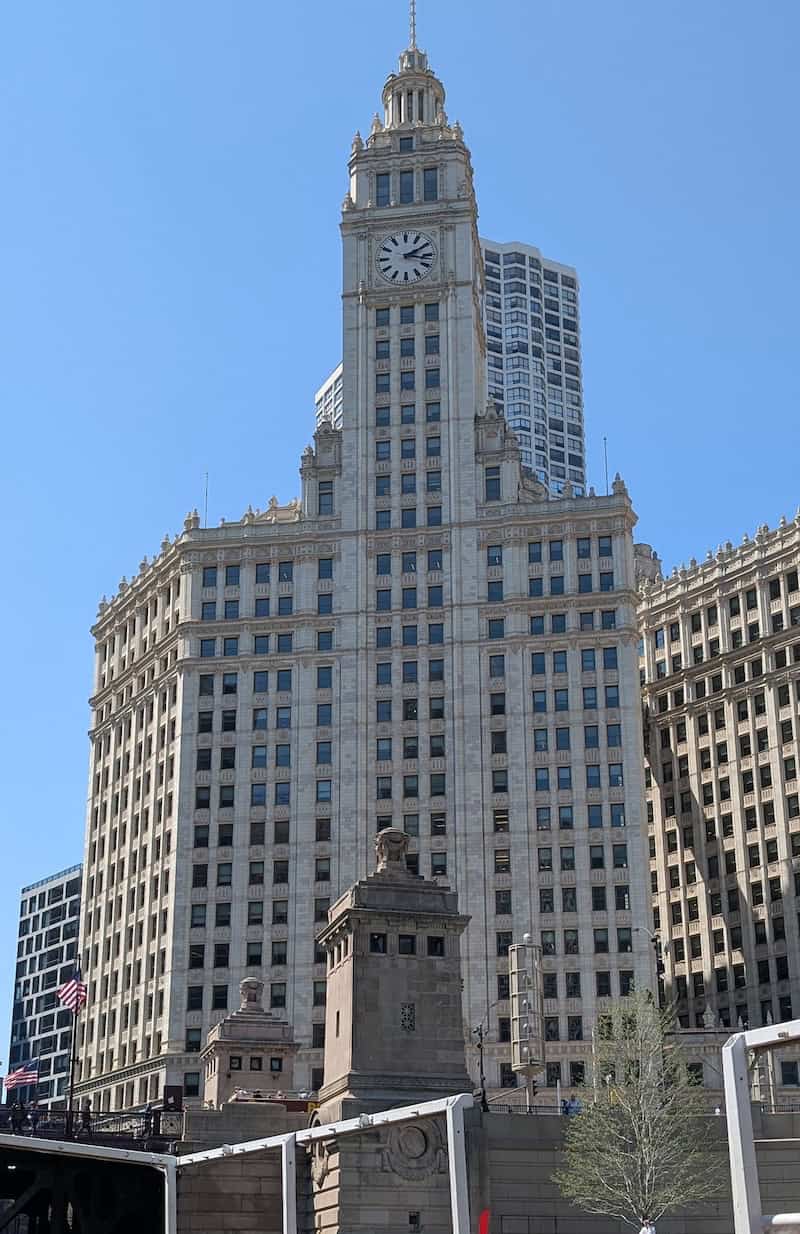
The distinctive clock tower features W’s worked into the numbers – a not-so-subtle branding move by the chewing gum empire. The building’s white terra cotta gleams against the river.
You can also see one of the concrete Art Deco towers that’s on either side of the bridge here, setting the tone for Chicago’s love affair with decorative skyscraper design.
NBC Tower
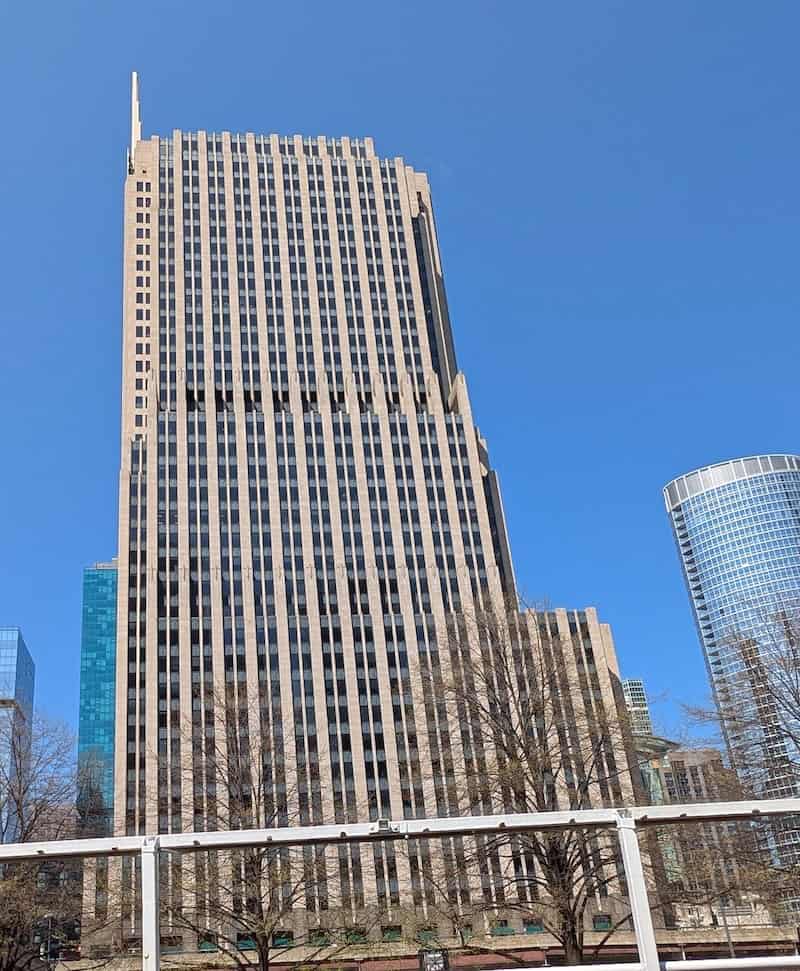
My favorite bit of trivia about this Art Deco-inspired tower: it housed “The Jerry Springer Show” during its run. According to insiders who worked there, it was as chaotic as you’d imagine.
Merchandise Mart
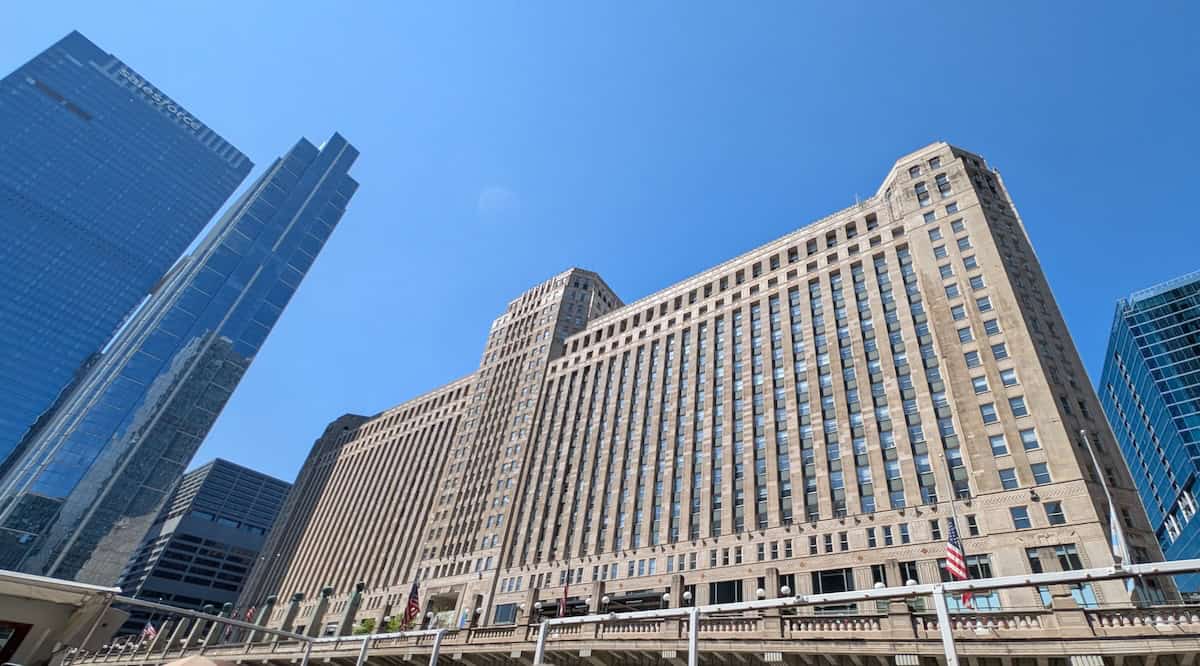
This massive Art Deco building is so large it has its own zip code. The structure was modeled after New York’s Rockefeller Center and features imposing statue heads at the entrance.
St. Regis Chicago
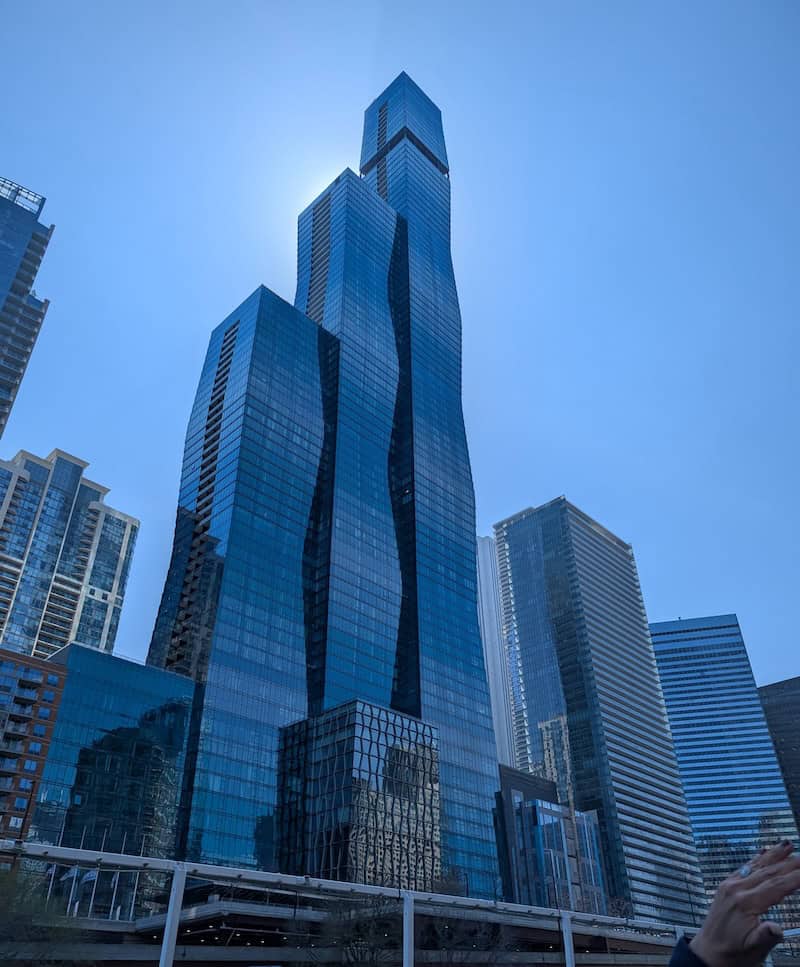
Designed by Jeanne Gang, this is the tallest building in the world designed by a female architect at 1,196 feet tall and Chicago’s third-tallest building. The building uses frustum shapes (truncated pyramids) stacked and nested to create its flowing, three-volume design with eight corners instead of four. The building contains “blow-through floors” to reduce wind-induced sway and six tuned mass damper tanks to counteract wind movement.
150 North Riverside
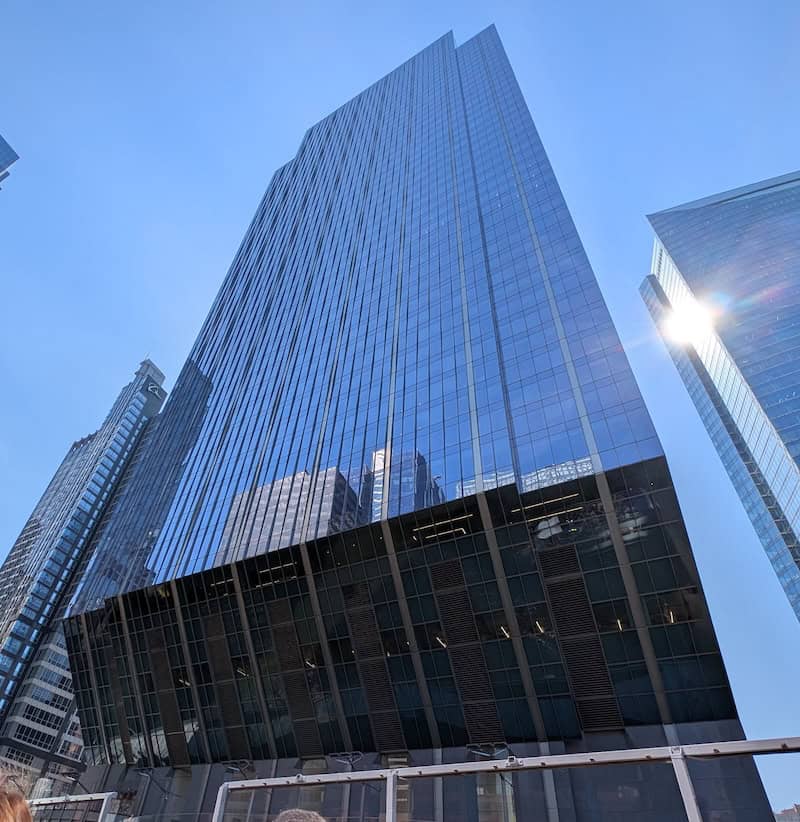
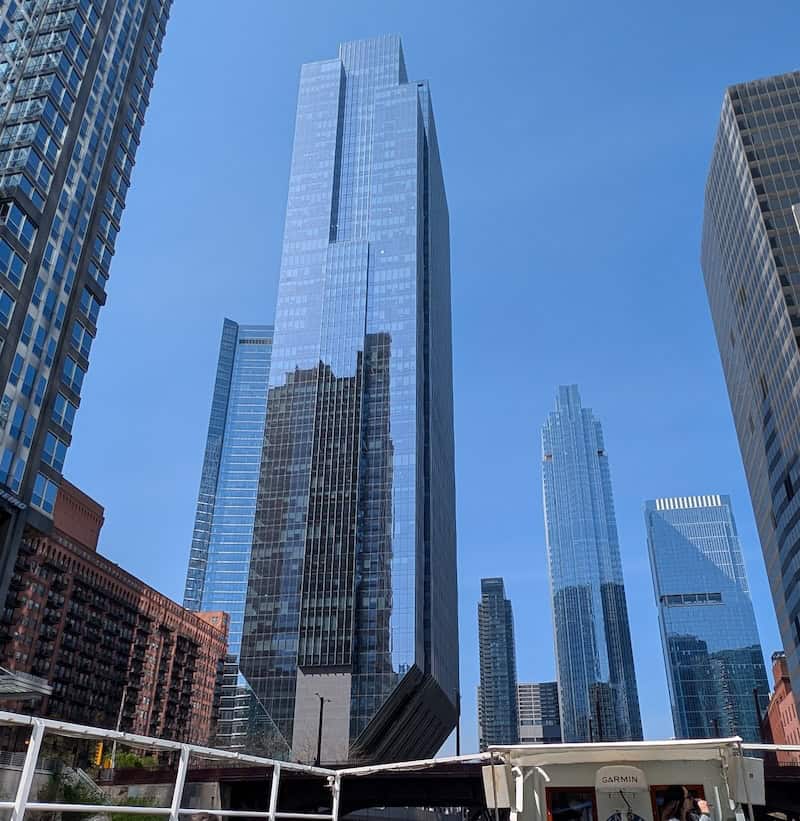
This building features an almost dizzying cantilever construction where the base appears impossibly narrow for such a tall structure. The concrete foundation extends 125 feet underground for stabilization.
Marina City
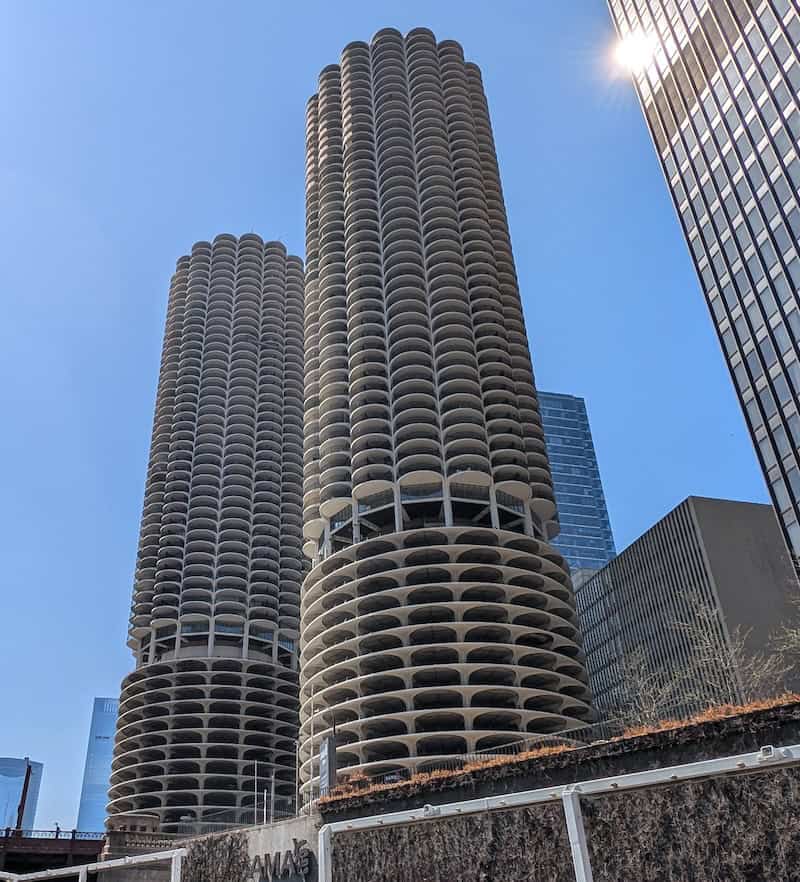
Designed by Bertrand Goldberg, who famously believed that since no right angles exist in nature, none should exist in architecture. These twin towers house both parking garages (the lower levels with spiral ramps) and residences in their distinctive cylindrical design. When completed in 1967, they were the tallest residential buildings and tallest reinforced concrete structures in the world.
Old Montgomery Ward Warehouse
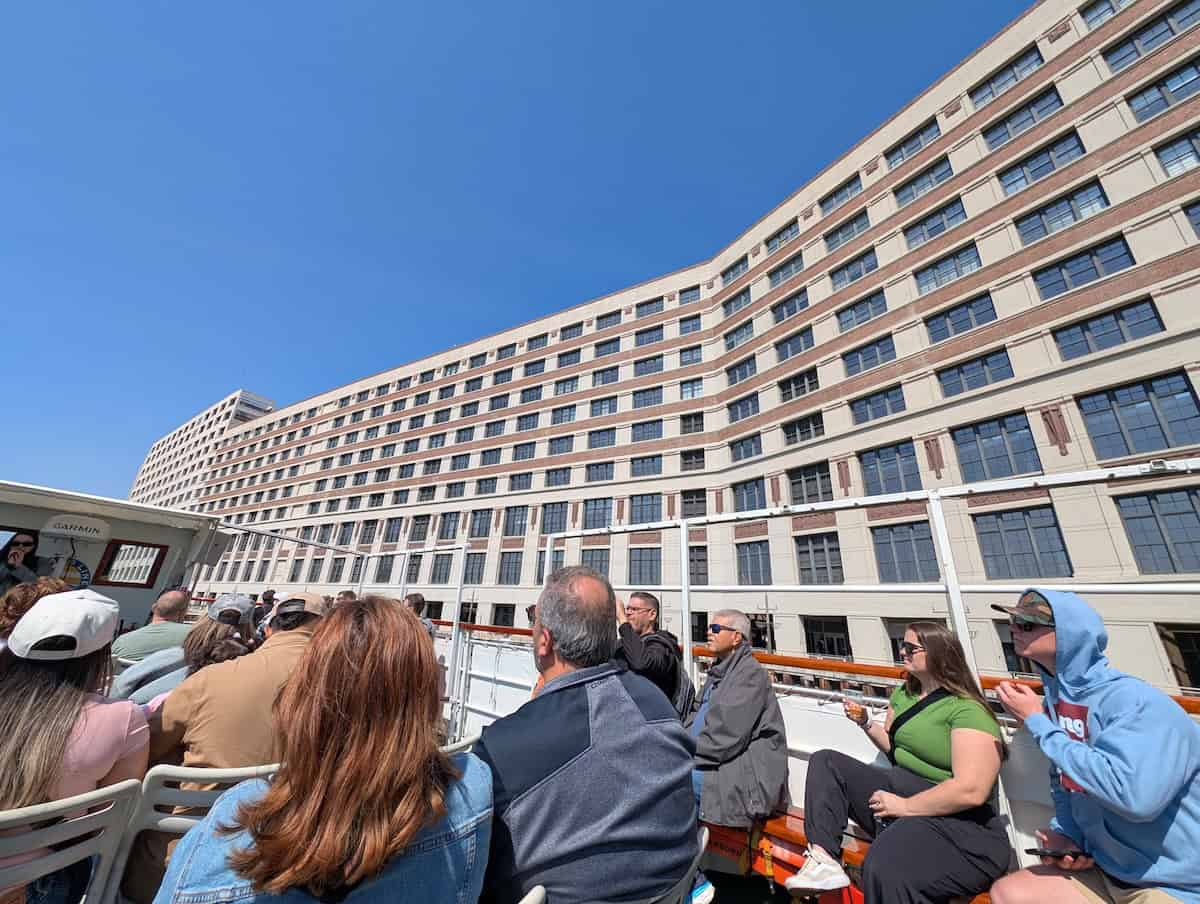
This massive 1870s warehouse was a major piece of mail-order catalog shopping history. Workers traveled through the building on roller skates to fulfill orders, and the Montgomery Ward company pioneered the money-back guarantee.
Willis Tower
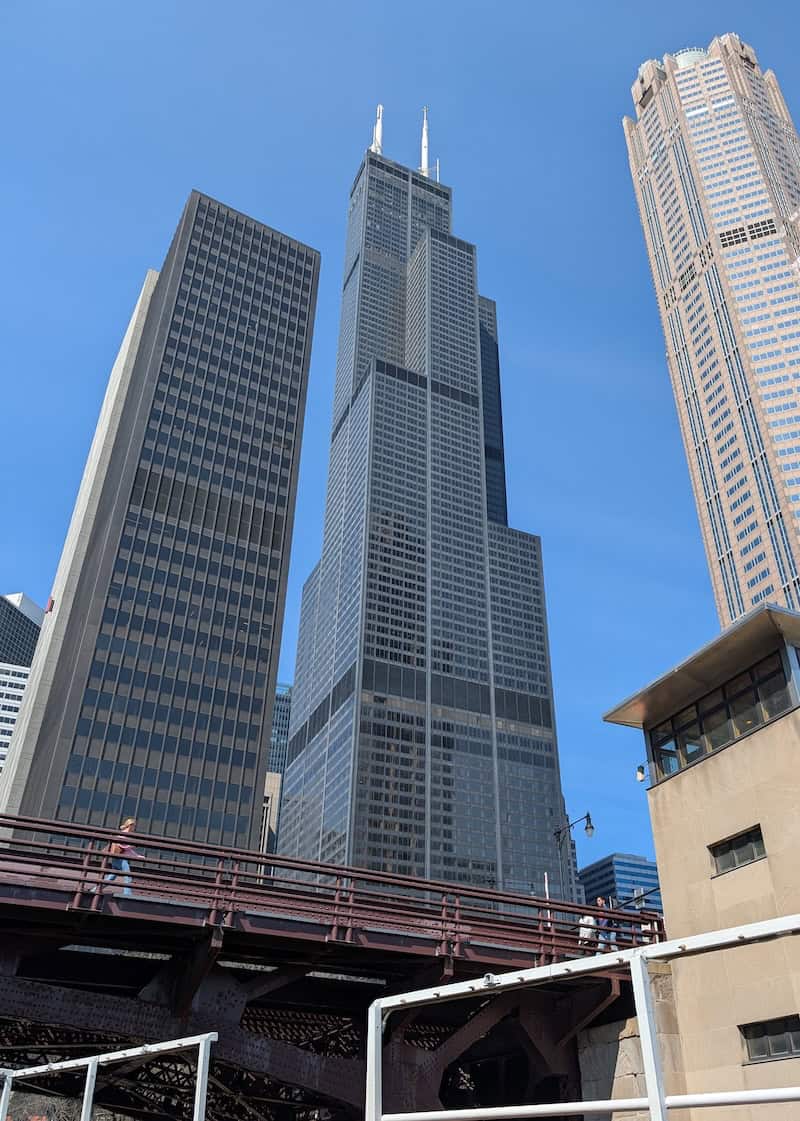
Once the world’s tallest building, it remains Chicago’s tallest and most recognizable skyscraper.
“Balconization” Buildings
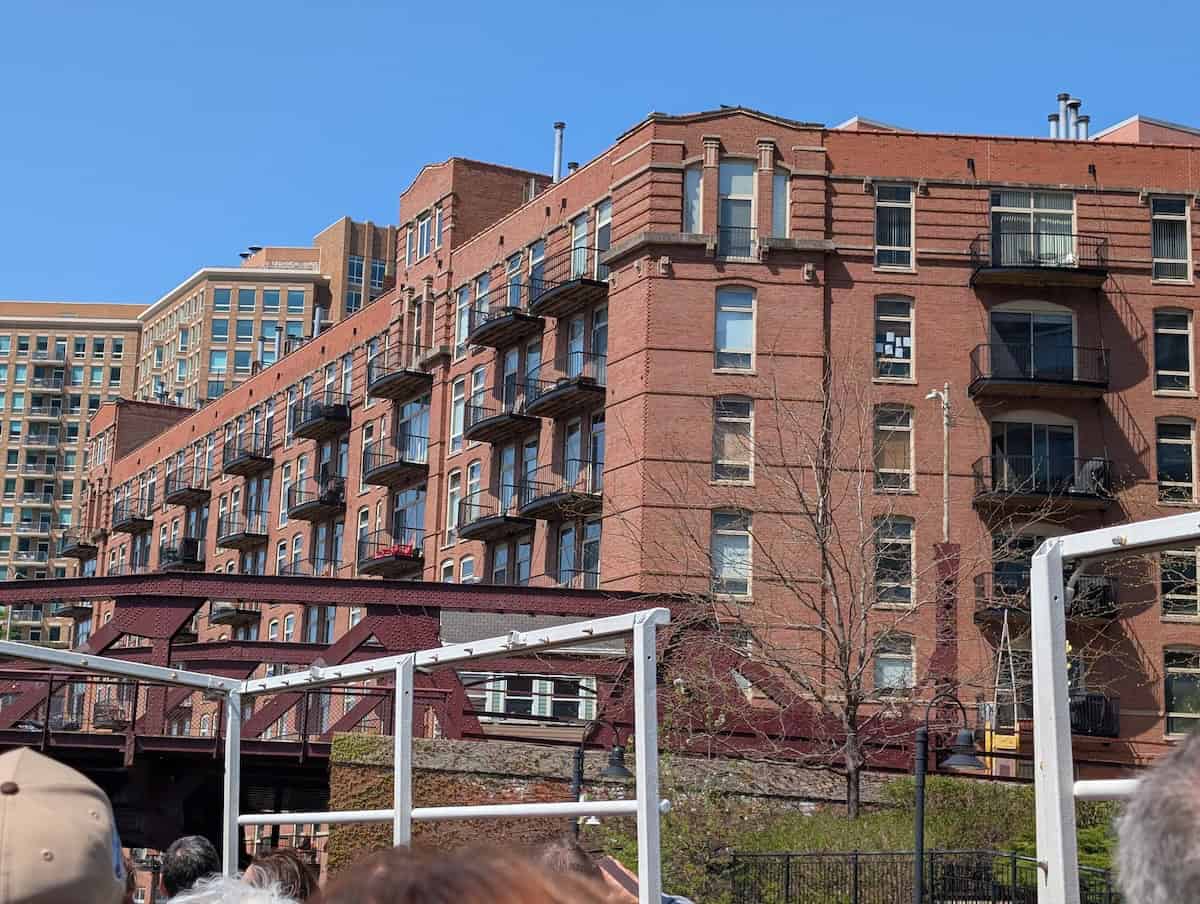
Several red brick buildings throughout the tour show Chicago’s approach to adaptive reuse – adding balconies to convert commercial buildings into residential spaces.
The Carbide & Carbon Building
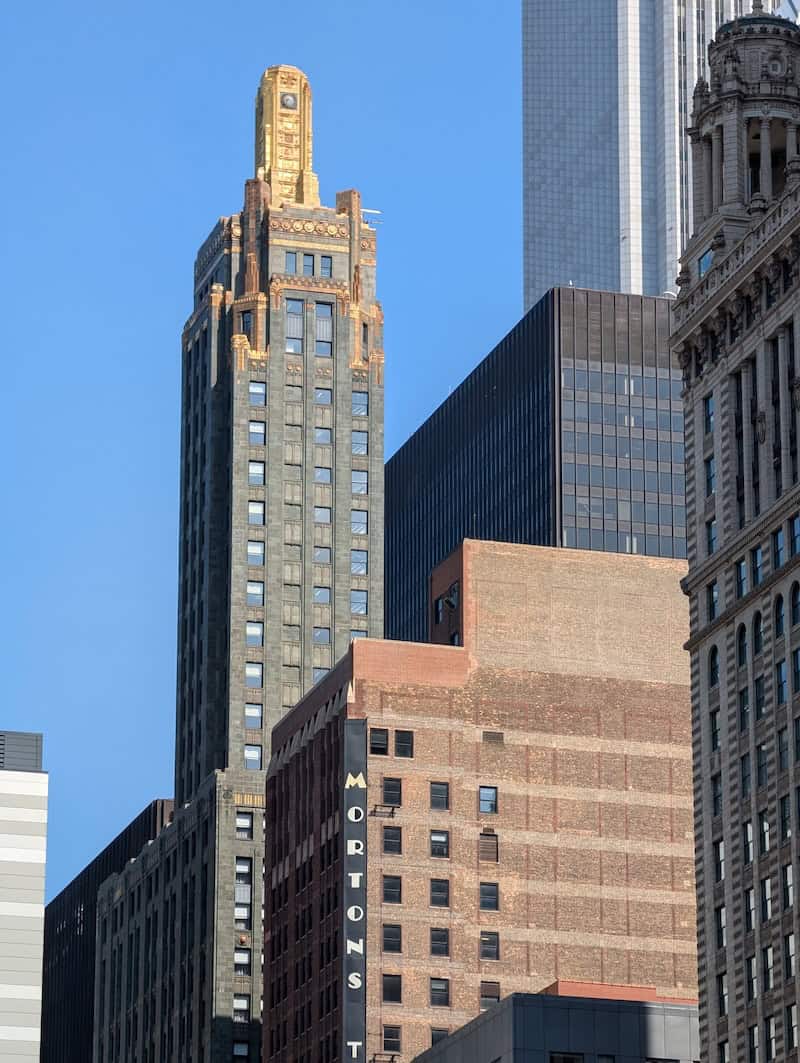
This gold-topped building was deliberately designed to resemble a champagne bottle, with the cap covered in 24-karat gold.
Ceres Statue
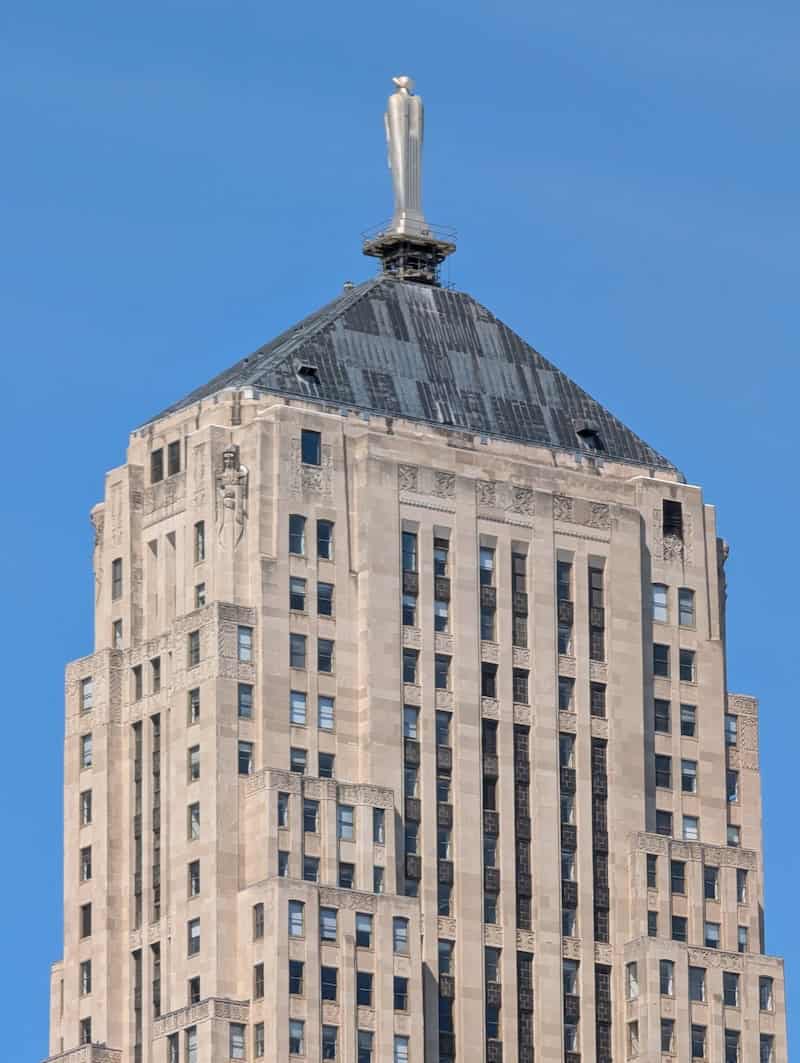
This is the statue of Ceres, the Roman goddess of grain, atop the Chicago Board of Trade Building – a nod to Chicago’s agricultural trading history.
Map of the Chicago River
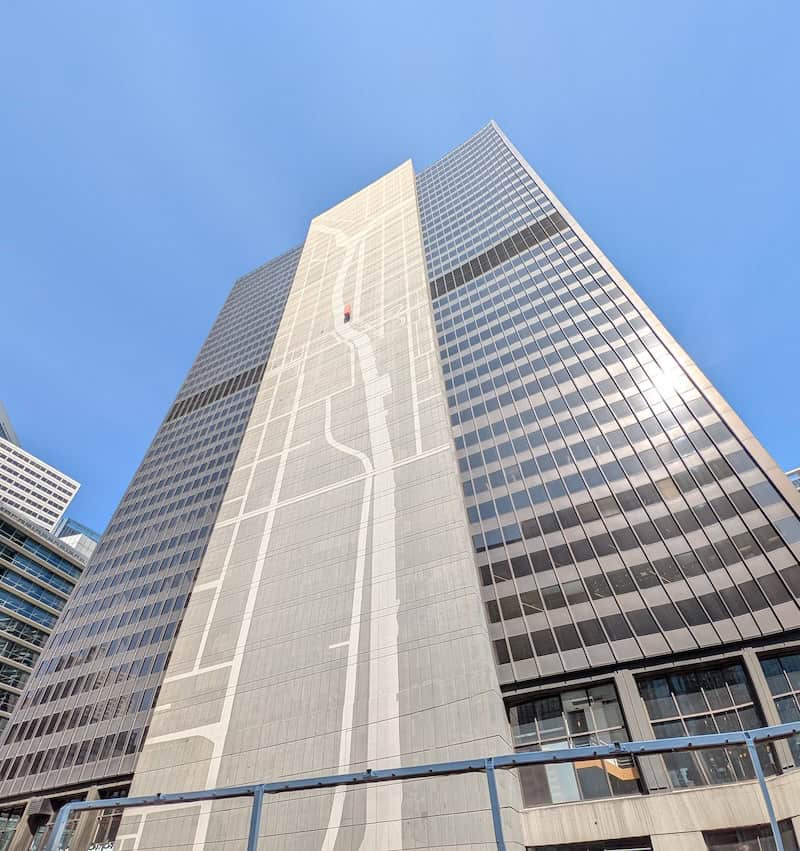
This building displays a very cool map of the Chicago River – the red box shows where the building is along the route.
About the Author
 As the editor-in-chief of Frayed Passport, my goal is to help you build a lifestyle that lets you travel the world whenever you want and however long you want, and not worry about where your next paycheck will come from. I've been to 20+ countries and five continents, lived for years as a full-time digital nomad, and have worked completely remotely since 2015. If you would like to share your story with our community, or partner with Frayed Passport, get in touch with me using the form on our About page.
As the editor-in-chief of Frayed Passport, my goal is to help you build a lifestyle that lets you travel the world whenever you want and however long you want, and not worry about where your next paycheck will come from. I've been to 20+ countries and five continents, lived for years as a full-time digital nomad, and have worked completely remotely since 2015. If you would like to share your story with our community, or partner with Frayed Passport, get in touch with me using the form on our About page.Featured image by Gautam Krishnan on Unsplash. All other images in this article courtesy of the author.
Information published on this website and across our networks can change over time. Stories and recommendations reflect the subjective opinions of our writers. You should consult multiple sources to ensure you have the most current, safe, and correct details for your own research and plans.
Frayed Passport is a participant in the Amazon Associates Program, an affiliate advertising program designed to provide a means for sites to earn advertising fees by advertising and linking to Amazon.com. We also may share links to other affiliates and sponsors in articles across our website.




